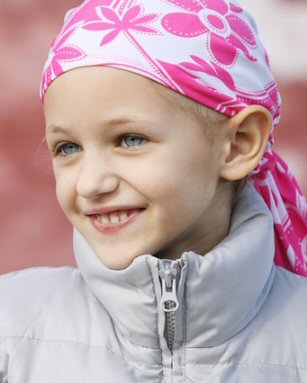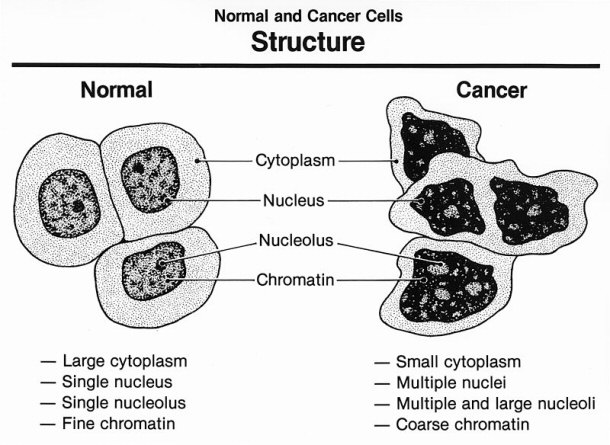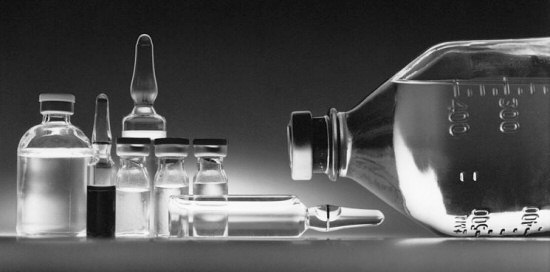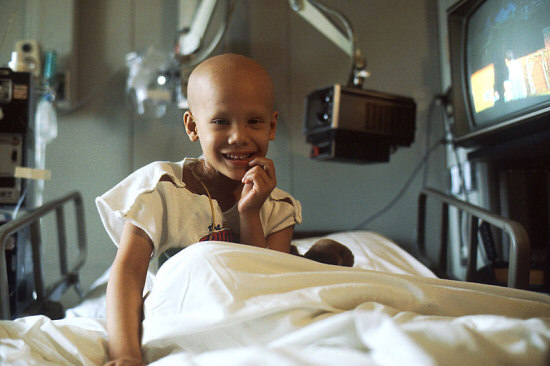How Chemotherapy Treats Cancer
 A successful cancer treatment has two goals: remove the cancer cells and
minimum damage to normal cells. After many centuries of research, doctors have
many options for treating cancer: monoclonal antibody therapy, chemotherapy,
immunotherapy, surgery, and radiation therapy. The type of treatment used
depends on many considerations: general health of the patient, type of cancer,
stage of the disease, and grade and location of the tumor. Doctors usually use
more than one option for the same treatment. For instance, chemotherapy after
surgery has completely removed visible cancer is called adjuvant chemotherapy.
Chemotherapy protocols target and destroy cancer cells using drugs. There are
various protocols for treating different types of cancer. Normal cells affected
during chemotherapy recover after some time. However, the affected normal cells
cause side effects. This article describes how doctors use various types of
chemotherapy protocols to treat cancer. A successful cancer treatment has two goals: remove the cancer cells and
minimum damage to normal cells. After many centuries of research, doctors have
many options for treating cancer: monoclonal antibody therapy, chemotherapy,
immunotherapy, surgery, and radiation therapy. The type of treatment used
depends on many considerations: general health of the patient, type of cancer,
stage of the disease, and grade and location of the tumor. Doctors usually use
more than one option for the same treatment. For instance, chemotherapy after
surgery has completely removed visible cancer is called adjuvant chemotherapy.
Chemotherapy protocols target and destroy cancer cells using drugs. There are
various protocols for treating different types of cancer. Normal cells affected
during chemotherapy recover after some time. However, the affected normal cells
cause side effects. This article describes how doctors use various types of
chemotherapy protocols to treat cancer.
Cell Division in Normal and Cancer Cells

Body cells reproduce by subdividing themselves into two or more cells. Various
types genes, such as tumor suppressor genes and oncogenes, closely regulate this
complex process of cell division. Both normal and cancer cells undergo cell
division, a final stage in the cell cycle. The cell cycle starts from resting
phase then progresses to active growing phases and finally to cell division
(mitosis).
Normal cells stop dividing when they meet cells similar to them, a process
called contact inhibition. However, cancer consists of a group of cells that
grow abnormally and uncontrollably fast. They do not stop growing when they meet
other cells. Consequently, the cancer cells intrude upon and destroy neighboring
tissues. Furthermore, cancer cells can spread to other parts of the body through
the bloodstream or lymphatic system.
How Chemotherapy Cures Cancer
Chemotherapy cures cancer by stopping the cells from subdividing. The drugs can
stop the cell division in two ways. First, they can damage the DNA or RNA that
enables the cell to copy itself. Lastly, the drugs can induce cell suicide,
apoptosis. Cancer cells immediately die when they cannot divide and the tumor
shrinks. The treatment is most effective on cancer cells that divide fast.
Chemotherapy drugs destroy cancer cells in two phases of the cell cycle.
First, cell-cycle specific drugs only kill the cancer cells at their mitosis
phase. Lastly, cell-cycle non-specific drugs kill the cells before they start
dividing. Doctors schedule chemotherapy according to the type of cells, rate of
cell division, and the time when the drug is most effective. Therefore, they
administer chemotherapy in cycles.
Side Effects of Chemotherapy
Unfortunately, the drugs affect normal cells as well, especially the ones that
divide quickly. Affected normal cells regain their health after some time.
However, toxicity to normal cells causes serious side effects. Chemotherapy
seriously affects normal cells in hair follicles, bowel, stomach, mouth, and
blood. Therefore, the side effects of the treatment are hair loss, low blood
count, nausea, diarrhea, and mouth sores. Different drugs can cause the side
effects in different parts of the body.
Chemotherapy Drugs
There are six types chemotherapy drugs depending on their mode of action. First,
alkylating agents kill the cells in their resting phase. Therefore, they are
cell-cycle non-specific. Second, plant alkaloids are extracts from certain plant
species: Asian Happy Tree, May apple plant, Pacific Yew tree, and periwinkle
plant. They attack the cells in their division phase. Therefore, they are
cell-cycle specific. Third, ant-tumor antibiotics are extracts from products of
some species of streptomyces, a soil fungus. They are active during all phases
of the cell cycle. However, they are considered cell-cycle specific.

Fourth, anti-metabolites are similar to cell contents. They disable the
ability of the cell to divide when the cell absorbs them. They are active at
very specific phases of the cells. Therefore, they are cell-cycle specific.
Fifth, topoisomerase inhibitors work by interfering with activity of
topoisomerase enzymes. These enzymes enhance the manipulation of the DNA
structure to enable self-copying necessary for cell division. Lastly, there are
many other unique types of chemotherapy drugs. Some of the drugs overlap the
groups.
How Doctors Administer Chemotherapy Treatments
Many factors determine type and length of chemotherapy treatment. These factors
include the type of cancer, severity of the disease, types of drugs
administered, expected side effects of the drugs, expected recovery time from
the side effects, previous cancer treatments, general health of the patient, and
preferences and goals of the patient. Doctors use biopsy specimen to perform
clinical trials before they begin the treatment. The trials enable the doctors
to determine the best treatment schedule. They compare trial results from
different schedules to find the most effective and well-tolerated one.
Furthermore, the schedule selected should have the least side effects.
Generally, doctors administer chemotherapy treatments in cycles. This enables
the drugs to attack the cancer cells when they are most vulnerable. Furthermore,
breaks within one cycle of treatment allow affected normal cells enough time to
recover. The treatment can consist of a single or combination of several drugs.
One-month treatment comprises one cycle. For instance, thirty daily
treatments or two bi-weekly treatments comprise one cycle. Within one cycle of
treatment, doctors can administer the drugs on a single day, many consecutive
days or bi-weekly. A single administration of the drugs can take several
minutes, hours, or days. You may be an inpatient or outpatient during the
treatment.
Doctors can administer chemotherapy drugs in six different ways depending on
the location of the disease. First, they can apply chemotherapy creams or gels
to the skin to treat skin cancer. Second, they can administer the drugs directly
to a particular part of the body. For instance, in intrathecal chemotherapy,
they can administer the drugs directly to the central nervous system. Third,
they can administer the drugs directly on to the visible cancer or the place
where they surgically removed a cancer. For instance, they can inject the drug
directly into the cancer. Forth, they can infuse the drug into a vein. For
instance, the doctor can insert a tube into a vein in the arm to give an
intravenous injection: they attach a needle to the tube. Fifth, some
chemotherapy drugs are in the form of tablets, capsules, or pills. Lastly,
doctors can administer the drug as a simple injection.
Duration of Chemotherapy Treatments
The clinical trials done before treatment determine the number of cycles
required for the full treatment. Treatment of some cancers can take up to twelve
cycles: leukemia, Hodgkin and non-Hodgkin lymphoma, and cancers of the testis.
Doctors usually administer adjuvant chemotherapy for four to six months to
complete treatment of colon and breast cancers.

It is easy to monitor the progress of treatment of a visible cancer.
Therefore, the number of cycles required for full treatment will depend on how
the disease responds to the treatment. The treatment should continue for one to
two cycles after the cancer disappears to ensure elimination of all microscopic
disease. If it shrinks but does not disappear, treatment should continue as long
as the body can tolerate it and as long as the disease does not regenerate.
However, doctors stop the treatment if the disease regenerates. They can use a
different drug if the patient allows chemotherapy to continue. Otherwise, the
doctors will stop chemotherapy treatment and instead focus on making the patient
comfortable.
Medicine & Treatments
Top Lists:
Top 15 Hangover Cures That Actually Work
Top 15 Unusual Ways To Treat Diseases
Informational:
Computerized Physician Order Entry and ePrescribing
Health Data and Importance of Digitization
Nursing Information Systems – Vendor Market Analysis
Telehealth - Healthcare Informatic's Golden Egg
EHR, EMR, PHR – The Digital Future of Health Data
Bloodless Surgery – An Effective Alternative to Blood Transfusion
Medicines That Have Changed the World
The Process of Female Egg Donation
How Chemotherapy Treats Cancer
Thighplasty: Is a Leg Lift Procedure Right for You?
Treating Acne with Laser Therapy: Can it Benefit You?
Using Tanning Beds to Treat Vitamin D Deficiency
Choosing Birth Control
Social History of Patent Medicines
Biology
An Introduction to the Cells of Organisms
Cardiovascular System and Energy Systems |